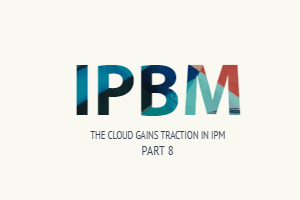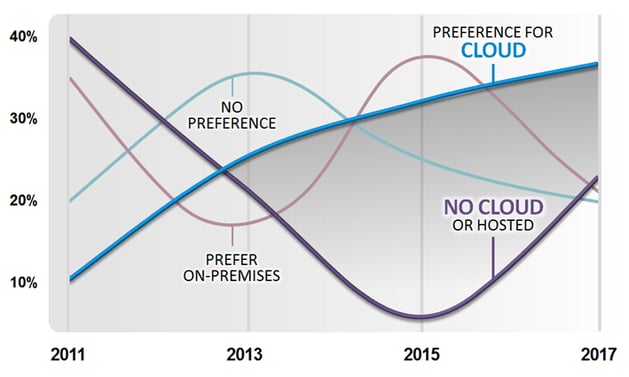
The Cloud Gains Traction in IPM
The tension between keeping data secure “behind the firewall” and the siren calls for scalability, flexibility and effective collaboration is particularly acute for managers of “innovation assets.” The resistance by legal organizations to Software-as-a-Service (SaaS) Cloud deployments is indeed slowly dissipating industry-wide. The rising popularity of cloud-based software models makes logical sense. Cloud represents the modern-day manifestation of corporate WAN infrastructures, though predicated on the leverage of the Internet and third-party infrastructures built for global scale. Proprietary enterprises could never approximate such horsepower.
These factors, as well as the burgeoning availability of Web-based integration and support services, help make extending content boundaries an attractive and cost effective proposition. The embrace of the Cloud, however, is tempered by concerns for the security of data and regulations surrounding the residency and flow of data in a global environment where political borders increasingly compete with technological ones. In some cases, the decision to keep data on-premises is driven by client discomfort. Much like the patient that struggles with the decision to be first to undergo a new procedure, few clients want to be guinea pigs for untested paradigms with potentially large risk exposure. Further, the availability and varying degrees of Cloud-readiness of third-party system integrations, and the need to maintain the integrity of those integrations in step, should also raise caution.
The embrace of the cloud in legal has been a deliberate one. Legal has traditionally been more conservative than other industries in its adoption of new technologies, and this rings true with our benchmarking results. As our year-over-year benchmarking demonstrates (Fig. 13 below), preferences for on-premise solutions have fluctuated somewhat as legal IT and operations managers grapple with new technologies and fresh approaches. However, the onward march of modern cloud-based solutions has been steadfast and tenacious – by no means a majority share of enterprise infrastructures, it continues to climb steadily and with determination. We expect cloud-based innovation to continue to drive market penetration, with deliberate and steady growth, but not particularly to pose a transcendent challenge to on-premises enterprises in the near future.
|
Fig. 13 The Shift in Cloud Policy
|
Specifically in IP, we have seen a rise in the use of “private Cloud” installations, often referred to as “Infrastructure-as-a-Service” (IaaS). In this model, organizations essentially rent privately maintained servers and storage space in an effort to assure direct control of security protocols, data privacy, residency and compliance, while also making IP data, processes and lifecycles more accessible and extensible.
With the numbers and roles of IP stakeholders ever increasing, and the need for high-quality decision-support analytics and portfolio data at a zenith, the organization’s business objectives—rather than the legal objectives—finally take center stage to drive the IPBM paradigm.



